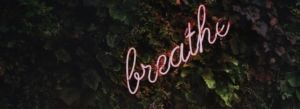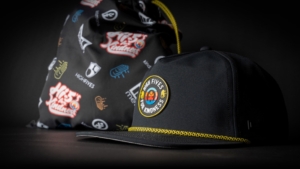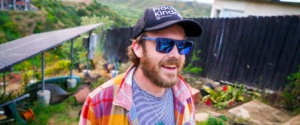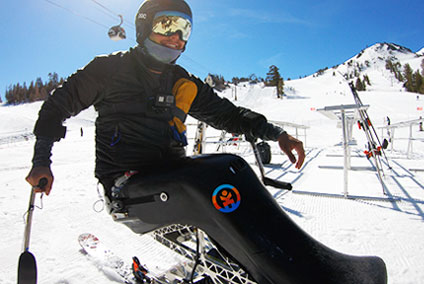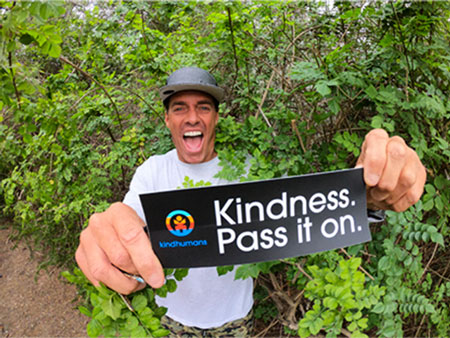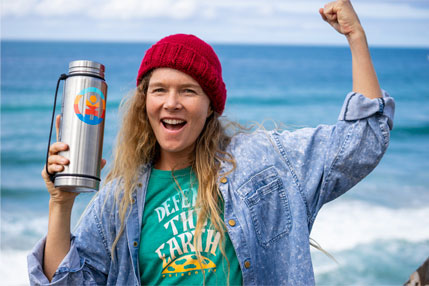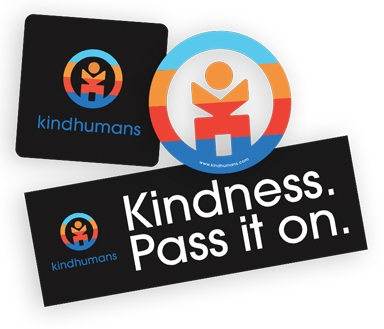
Filling ‘The Hope Gap’ – Sharing Stories of Resilience, Progress, and Success with Jill Tidman
Kindhumans ProfilesFilling ‘The Hope Gap’ – Sharing Stories of Resilience, Progress, and Success with Jill Tidman
Life is a gift, and Jill Tidman has dedicated hers to making a difference. She believed that every person can create positive change in their own way. Her dedication to environmentalism is unwavering and with her role as the Executive Director at the Redford Center, she has turned her passion into action by amplifying the unsung heroes that are paving the way for environmental conservation and change. Programs powered by the Redford Center, such as the Grantee Program, tell the unknown stories of resilience, progress, and success that inspire others to achieve the same. We were lucky enough to catch up with Jill to learn about her history, the Redford Center, and what we can do as individuals to make a difference. We hope you enjoy. -KH
What led you to a career dedicated to sustainability through filmmaking?
In 1991 I took an introductory Environmental Studies class by accident. I had this very lovely, earthy Professor, Stephanie Kaza – who wrote the book Conversation with Trees: An Intimate Ecology – and she began every class by ringing a bell and then barraging us with facts about how the planet was dying. One day, about halfway through the semester, while she was ringing her bell, I just started sobbing and curled up in this stadium chair covered in purple nubby fabric. I remember it like it was yesterday. I was devastated by what I was learning and enraged that I was 19 and just finding all of these things out. I knew it was a defining moment for me and I would devote my life to making sure everyone was aware of our environmental predicament, so that we could all get to work on the solutions.
Can you tell us a little bit about the Redford Center and how you came to work there.
After my epiphany in college, I spent the first 15 years of my career looking for the right way to participate in the environmental movement, and I jumped from green architecture to green business to local government work. It was while I was doing local government work in 2005 that I began working with the Redfords, and I had the opportunity to bring art and story into their efforts to drive climate progress—combining art and nature are the two hallmarks of how The Redford Center operates and it’s a powerful combination.

How do you hope to inspire the next generation of filmmakers?
We absolutely want to inspire the next generation of filmmakers. To us that means meeting people where they are and offering up resources for them to be the storytellers that they want to be and that the world needs. The programmatic work is designed first and foremost to bring more people into the effort who may not necessarily think of themselves as environmentalists, but who have very similar personal goals and concerns. The Redford Center gives them support, a platform, and whatever tools we can to help them get their own stories out into the world.
What does sustainability mean to you and what role does it play in your life and at the Redford Center?
For me, sustainability aligns with the practice of regeneration. So leaving things better than you find them, and contributing whatever you can to improve the overall quality of life, for all species—with the exception of any mosquito that makes its way into one of my kids’ rooms at night, then it’s game over. But I have been such a big greenie for so long that this way of being feels baked into my decision-making and I don’t often consciously stop and think about it. I actually wouldn’t even know how to untangle it at this point, and I guess that’s ultimately the goal of the work, to educate and inspire people in such a way that making decisions that leave the planet and our communities better off just becomes second nature. This extends right through to work of The Redford Center, and it comes directly from the Redford family ethos of always working to make the world a better place. It’s the reason the organization exists—to leverage the power of story to create a healthier, more just and sustainable future for all.

As a company, it looks like you tackle many admirable social and environmental issues; what are you personally most passionate about?
I’m most passionate about creating and supporting stories about people who are living on the frontlines of environmental destruction, pollution, and climate impacts. They are the ones fighting for their future every day, solving problems, and winning. Filling what we call “the hope gap” with these unknown stories of resilience, progress, and success is what I cherish most about my job. We don’t hear these stories enough, and they are medicine. I want to hear from these leaders, and I want to make sure that a lot more people hear from them too. I often think about Esther Calhoun. Esther is the former President of the Black Belt Citizens Fighting for Health and Justice in Uniontown, Alabama and she is the star of a short film called, Uniontown—a 2018 Redford Center grantee. Uniontown tells the story of how Esther uplifted and inspired her community to clean and care for their local environment and preserve what’s left of their natural resources. She encouraged people to improve the health of their community, and in turn improve their own health. There are so many Esthers at work all over the world, and I want to support them in sharing their stories and inspiring more of the same.
Can you share a moment in your career at Redford Center that really stood out to you? Maybe a certain project or a certain filmmaker?
Most people don’t know that the Colorado River no longer flows all the way to the sea, and it hasn’t for decades. It dries up about 70 miles north of its natural end at the Sea of Cortez. The Redford Center’s film WATERSHED has been helping raise funds and support for a historic bi-national coalition effort, called Raise the River, to reconnect the Colorado River and the sea, and return water to the Colorado River Delta permanently. My first time planting a tree in the Delta is a career highlight for sure. Probably because it’s so rare to be able to experience an impact from a film that directly, and having it tied to witnessing nature’s resilience really impacted me. Another moment that always stands out was when one of our Redford Center Grantees received news that we were granting her $50,000 to help her complete her feature film. She was so full of gratitude and shared that before this she was down to $78 in the project’s bank account and about to halt production. I credit that moment as one of the catalysts for The Redford Center’s ambitious growth plans. The need for more resources inside the community of storytellers committed to this work is just massive.
“I’m most passionate about creating and supporting stories about people who are living on the frontlines of environmental destruction, pollution, and climate impacts. They are the ones fighting for our future every day, solving things and winning.”
– Jill Tidman
What’s in store for the Redford Center in 2020?
So much! 2020 was supposed to be a year of mega growth for The Redford Center. We are doing everything we can to broaden and strengthen the environmental movement as a whole so that we can emerge from this pandemic in a far stronger position to combat the climate crisis. This means taking a more expansive view of how we define and measure our impact. We are aiming to provide significantly more resources to the filmmakers we support to help generate a marketplace for more hopeful and relatable environmental stories. We are moving to become more rapidly responsive with our narrative interventions and engage in partnerships that will allow us to exponentially increase the number of people and the diversity of the population involved in environmental justice, protection and repair. While this all may sound wildly ambitious, we are seeing the very same stripe of collective action on display right now that is required to win on climate. Now we have proof that it can be done even if the threat is imminent. And there is no question that the climate threat is imminent, it just needs to become more personal and that’s where storytelling reigns.
If you could spend time with any kind human in history, who would that be and what would you do together?
My late father-in-law, Reverend William Sloane Coffin Jr., worked closely with Dr. Martin Luther King Jr. and I have often thought about how Dr. King would have engaged in the environmental movement had he lived long enough to participate. I believe he would have seen straight away that the root causes of environmental injustice are the same root causes of racial injustice and economic injustice. They hit many of the same places when it comes to individual health, community health, and planetary health. If I could spend time with any human in history, it would be with Dr. King, to unify the civil rights and environmental movements. They are so intertwined; people who have not been given equal opportunity, people who live in poverty, and people of color tend to experience disproportionate and inexcusable amounts of suffering when it comes to climate and environmental impacts. We are seeing this more clearly than ever today with the loss of life and livelihood from COVID-19.
Do you have a “life lesson” or kindness quote that you can share?
On my dresser I have this little tag I pulled off a tea bag, which is embarrassing, but it says “This life is a gift.” I just like thinking about that every day. I like the reminder, and the basic truth in it.
What does kindness mean to you? What role does it play in your life?
Mostly I think of kindness as an expression of love. I believe it comes from a place of deep connection and compassion and it has extraordinary power to bring people together. Maya Angelou has this quote that is a guiding force for me: “At the end of the day people won’t remember what you said or did, they will remember how you made them feel.” Kindness has always seemed intimately intertwined with this idea.
Name a kind human in your life that has positively affected you and why?
My mentor in kindness is my dad. His life’s purpose is to help people. I get major doses as his daughter, along with lots of “free advice,” but his kindness goes far beyond family. I grew up holding babies in an orphanage that he supported and for 20 years he mentored a young man named Andra who became a brother to me. Last summer the custodian at my children’s elementary school, Mr. Miguel, was one of 10 finalists in the Cintas National Janitor Contest. I sent my dad the link to vote for Mr. Miguel and he decided the 9 custodians who didn’t win deserved prize money too. So he sent them each a check with a note about his grade school custodian, Mr. Mel, that read, “Mr. Mel was a gentle and happy man. He would join our game for a few minutes every once in a while. But I really remember when he would motion us to come over to him when we were misbehaving. He would get down on one knee (so he was at our level and not towering over us) and kind of set us straight. Then he would say: ‘You’re better than that, now go and be good.’ We loved him.”
My dad has since become pen pals with many of the finalist custodians who told him what they did with the money he sent. In almost every case, they spent it on other people. It’s as you say: “Kindness, pass it on.”
If you had one wish for our future generations what would it be?
It would be that they are free from the threat of catastrophic climate change. That we have solved it in time.
What is a message you want to spread and leave with the Kindhumans community?
There’s this saying “get in where you fit in” that is my favorite advice for anyone who feels compelled to give of themselves. Whether it’s time, talent or resources – there is so much need for support. And while it’s overwhelming to figure out how to dive in, doing what feels right and purposeful and personal is always the best place to start. With the environment, it’s very common to think you need to understand this big, deeply complex and intersectional thing before you can start taking action. But it’s actually the opposite. We have so much more power over this issue than we think. What we eat, what we buy, where we buy it, where we go, how we get there, who we vote for. Every action matters and we have so many healthy choices these days. Brands like the ones Kindhumans sources are perfect examples. No one should feel like they need to be experts on environmental issues in order to participate. Right now, the most important environmental action anyone can take is to vote. You don’t have to be an environmental expert to vote for that value, or to demand better policies, better products, better stories, better leadership and more equitable systems for all. My favorite Robert Redford quote that pretty much sums it up for me goes is this, “Anytime anyone voices a concern about the life we’re going to be leaving, they’re called an environmentalist. And if that’s so, I am an environmentalist.”
About Jill Tidman:

Jill grew up in St. Louis, Missouri and went to college at the University of Vermont, where she first met her husband, Wil, and began her environmental education. After college she moved to the San Francisco Bay Area, an epicenter of progressive thinking and action, particularly with regard to the environment. Jill feels fortunate enough to have worked with and learned from many leaders like Alice Waters, Mathis Wackernagel, Sim Van der Ryn, Paul Hawken and Stewart Brand who were pushing systems thinking and green innovations in food, finance, architecture, business, and tech.
Jill and Wil still live in San Francisco with their two children. Her very favorite thing to do is to be with the three of them, preferably outside, somewhere beautiful, with space for the kids to run! She loves yoga, swimming, and creative writing, which was a much bigger part of her life pre-motherhood and before she took on her ED job. Jill’s little known talent is figure skating: which she did competitively for a good part of her childhood. Being active and outdoors has always had a tremendous impact on Jill’s life and she feels honored every day to do the work she does, with a community of the kindest humans, especially the Redfords.
“I have learned so much from the Redford family over the past 15 years—not just about being fearlessly committed to enacting positive environmental change, but about being a kind human, about doing the work from a place of mutual respect, for all life. “- Jill Tidman


